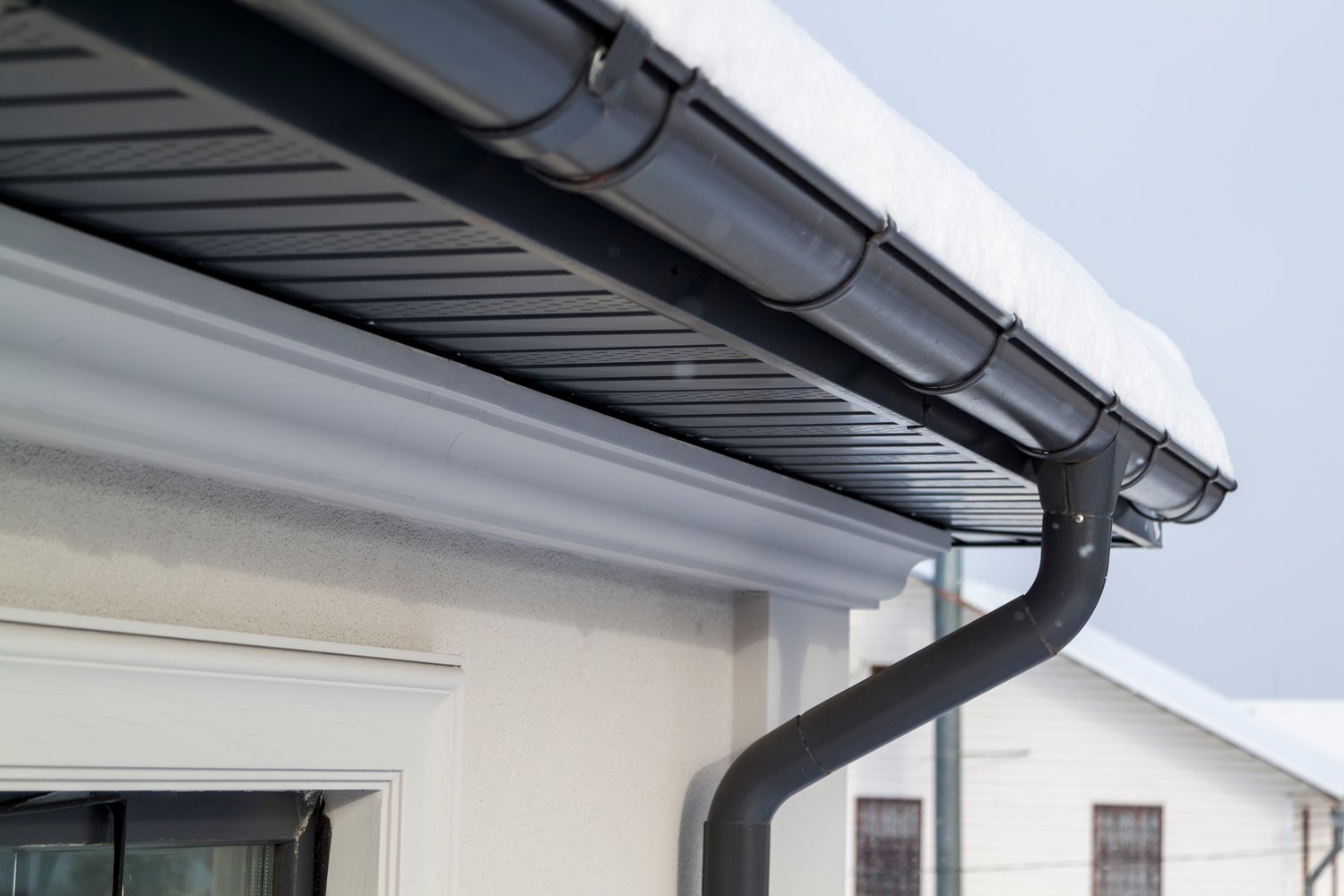As winter settles in, homeowners face numerous challenges in maintaining their properties, with ice dams ranking among the most troublesome and potentially costly. These frozen formations along the edges of roofs can lead to serious winter roof damage if left unaddressed. In this comprehensive guide, we’ll explore what an ice dam is, how these problematic ice structures develop, the damage they can cause, and most importantly, effective ice dam prevention strategies to protect your home during the coldest months of the year.
Understanding Ice Dams: What They Are and Why They Form
An ice dam is a ridge of ice that forms at the edge of a roof and prevents melting snow from draining properly. The mechanics behind roof ice dams are relatively straightforward but involve a combination of factors. When heat from your home escapes through the roof, it warms the snow resting on your shingles. This warming causes the snow to melt, and the resulting water flows down toward the eaves—the edges of your roof that extend beyond the exterior walls. Because these eaves remain cold (they don’t have warm attic space beneath them), the water refreezes when it reaches this point, forming a dam of ice.
As more snow melts and encounters this dam, the water backs up behind the ice blockage. This trapped water can then seep under shingles, through roof decking, and eventually into your home’s interior. The cycle continues throughout winter, with the ice dam growing larger as more water freezes at the eave edge, potentially leading to significant structural damage over time.
The Destructive Potential of Ice Dams
The damage caused by ice dams can be extensive and expensive to repair. When water penetrates your roofing materials, it can damage roof sheathing and framing members. This moisture intrusion can lead to mold growth in your attic, rotting of wooden structural components, and deterioration of insulation, reducing its effectiveness.
Inside your home, evidence of ice dam-related damage often appears as water stains on ceilings and walls, peeling paint, warped floors, and damaged plaster. In severe cases, water can even damage electrical systems, creating potential fire hazards. Additionally, the weight of the ice itself can damage gutters and downspouts, sometimes pulling them completely away from the house.
Perhaps most concerning is that many homeowners insurance policies may not fully cover ice dam damage, as it’s often considered preventable with proper home maintenance. According to home repair specialists at AskHomey, addressing ice dam issues proactively is far less expensive than dealing with the aftermath of water damage to your home.
Effective Ice Dam Prevention Strategies
The most effective approach to ice dam prevention focuses on eliminating the conditions that allow them to form in the first place. This primarily means keeping your roof at a consistent, cold temperature—the same as the outside air. Here’s how to achieve this:
Improving attic insulation is perhaps the most crucial step in preventing ice dams. A well-insulated attic floor keeps heat from escaping your living spaces into the attic and, subsequently, through the roof. The Department of Energy recommends R-49 to R-60 insulation levels for attics in cold climates. Pay special attention to sealing gaps around pipes, vents, chimneys, and other areas where warm air might leak upward.
Proper attic ventilation works hand-in-hand with insulation. Even with excellent insulation, some heat will inevitably reach your attic. Good ventilation helps remove this warm air before it can heat your roof. A properly designed ventilation system creates a continuous airflow from the eave soffit vents up to ridge or gable vents, maintaining a cold roof surface where snow won’t melt prematurely.
For immediate management during heavy snowfalls, consider roof raking—removing snow from the edge of your roof using a specialized tool called a roof rake. By clearing at least the bottom four feet of your roof after significant snowfall, you eliminate the material that would otherwise melt and form an ice dam. Always rake from the ground, and never climb onto a snow-covered roof, which presents serious safety hazards.
Emergency Measures and Professional Solutions
If you’re already dealing with ice dams, there are some emergency measures you can take. Calcium chloride ice melt products (never rock salt, which can damage roofing materials) can be used to create channels through the ice dam, allowing backed-up water to drain. Place the calcium chloride in pantyhose or a sock and lay it vertically across the ice dam.
For persistent problems, consider professional solutions such as heated cables along roof edges or professional ice dam removal services. While somewhat costly, these interventions can prevent much more expensive water damage repairs. Some homeowners with recurring ice dam issues may ultimately need to consider redesigning problematic roof areas during their next roofing project.
Remember that ice dam prevention is a year-round consideration. Planning roof improvements during warmer months can save you from winter roof damage and the headaches that come with it when temperatures drop.
For more tips and to connect with reliable home service professionals, follow AskHomey on Facebook and Instagram.



